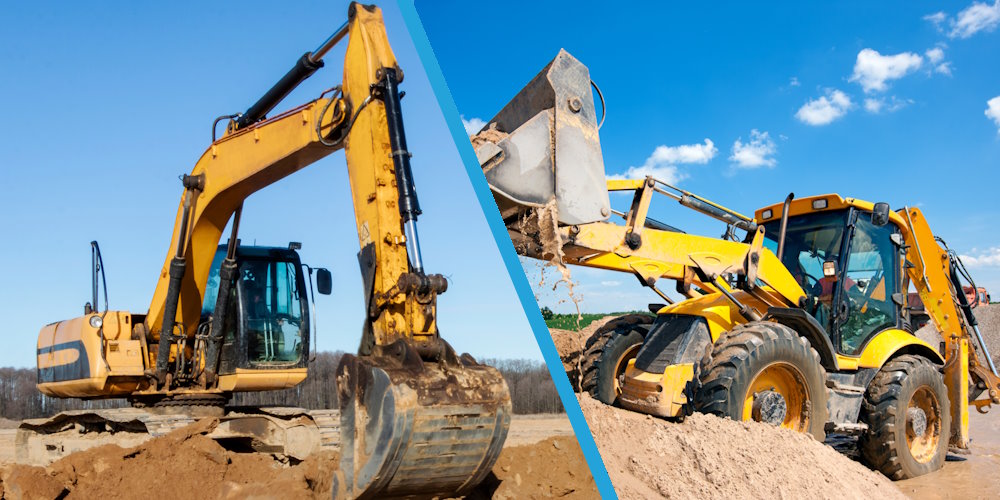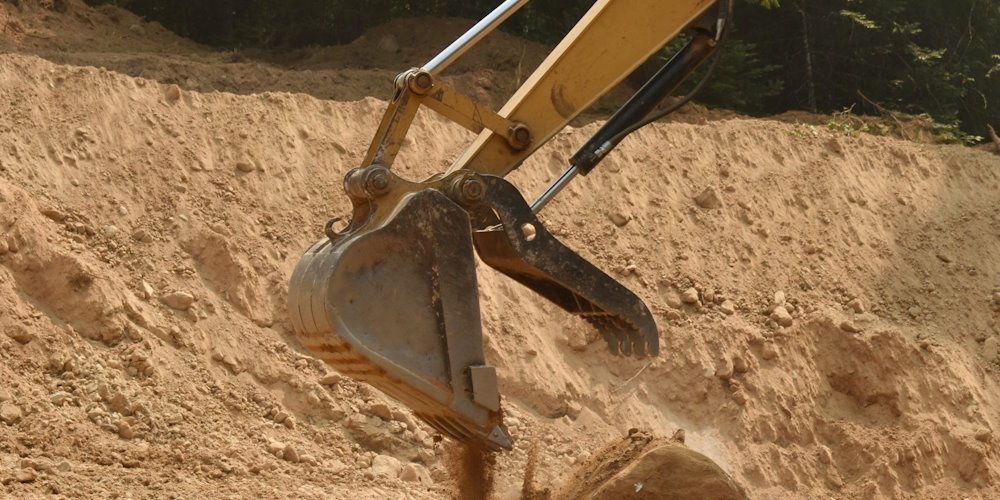
Backhoes vs Excavators: What are the Differences?
Deciding between a backhoe and an excavator for your next project can feel like navigating a maze without a map. Both pieces of equipment boast unique strengths, tailored for specific tasks in the construction realm. But what sets them apart, and how do you choose the right one for your needs? Whether you’re digging deep trenches, demolishing buildings, or clearing snow, understanding the key differences between these two powerhouses is crucial.
Backhoes, known for their versatility, can zip along roads at speeds up to 25 miles per hour and swap out attachments for various jobs. On the flip side, excavators pack a more powerful punch, designed for heavy-duty tasks with their larger size and more robust digging capabilities. Maneuverability, power, and job suitability are just the tip of the iceberg. Let’s dive deeper into the backhoe vs. excavator debate to ensure you’re armed with all the information you need to make the best decision for your project.
What Is a Backhoe?
A backhoe represents a versatile piece of construction equipment, characterized by its tractor base and a distinctive, two-part arm featuring a loader attachment at the front and a backhoe at the rear. This composition allows it to perform a wide range of tasks, from digging to moving heavy materials. The structure of a backhoe facilitates operational flexibility, thanks to a 360-degree rotating operator’s seat, enabling the user to switch tasks efficiently without physically repositioning the entire machine.
Central to the backhoe’s design are its three hydraulically powered components: the tractor, loader, and backhoe. Each plays a crucial role, with the tractor providing the mobility and power, the loader handling materials, and the backhoe attachment excelling in excavation jobs. Depending on specific requirements, backhoes come in two main configurations: center mount and side shift. The former features a centrally connected backhoe for stability, while the latter, favored for its maneuverability, allows lateral movement of the backhoe attachment on stabilized frame rails.
Versatility extends to the attachments as well, with various options like rakes, hammers, and drills for the backhoe arm, and forklift, broom, and plow capacities for the loader. This adaptability makes the backhoe a valued asset on sites requiring a multifaceted approach to excavation, material handling, and site preparation, especially in light to medium-duty applications found in environments such as farms.
Understanding the backhoe’s capabilities, configurations, and attachments is essential, as these factors directly influence its utility and performance in diverse construction tasks. Through this knowledge, you can ascertain whether a backhoe’s adaptable nature and broad application scope align with your project requirements, especially in scenarios warranting flexibility over raw power.
What Is an Excavator?
An excavator stands as a premier digging machine, defined by its assembly consisting of a boom, dipper, digging bucket, and chassis. Unlike backhoes, which often are modified tractors with an attachment, excavators are expressly designed for heftier projects, offering unmatched power in digging tasks. These machines can operate on either tracks or wheels, providing versatility across different terrains.
Excavators distinguish themselves with a cab capable of rotating 360 degrees atop their undercarriage, a feature that significantly enhances their operational flexibility compared to backhoes. Most models are equipped with a dozer blade placed opposite the digging arm, adding to their functionality by allowing not just excavation but also grading and landscaping tasks.
Your choice of excavator extends its abilities beyond mere digging. With a range of attachments available, an excavator can adapt to perform various heavy-duty jobs such as drilling and demolition. In forestry, brushcutting attachments transform these machines into essential tools for clearing vegetation efficiently.
Delving into their anatomy, excavators consist of three fundamental parts: the house, the undercarriage, and the arm. Each component plays a critical role in the machine’s operation, with the undercarriage serving as the foundation. It supports the mobility of the excavator, featuring tracks, track frames, final drives, and in certain cases, blades.
Since their inception in the late 1800s, excavators have undergone considerable evolution but have maintained their basic configuration. This enduring design underscores their pivotal role in the construction industry, spotlighting their supreme digging power and flexibility. Whether navigating through rugged terrains with tracks or performing precise operations with various attachments, excavators embody the essence of heavy-duty machinery adapted for a breadth of construction tasks.
What Is the Difference Between a Backhoe and an Excavator?
Understanding the key distinctions between backhoes and excavators is crucial when selecting the right equipment for your construction projects. Each machine offers unique capabilities and limitations that cater to different needs.
Rotation Ability
The first major difference you’ll encounter between these machines lies in their rotation ability. Excavators boast a superior rotational range, allowing the cab and arm to rotate in a complete 360-degree circle. This feature provides unprecedented flexibility on the job site, enabling excavators to perform work in any direction without needing to reposition the entire machine. Backhoes, however, offer a more limited rotation, typically up to 200 degrees. This constraint can limit their functionality in tight or congested spaces, even though it’s often sufficient for standard tasks.
Versatility and Attachments
When it comes to versatility, backhoes generally take the lead. Their design accommodates a broader selection of attachments, from buckets to hammers, enhancing their utility for a variety of tasks beyond just digging. This adaptability, combined with the ability to drive on roads, makes backhoes particularly suitable for projects requiring mobility and flexibility across different work sites. Excavators, while also compatible with various attachments, tend to have fewer options available. Despite this, their specialized design provides unmatched power for heavy-duty digging and demolition jobs.
Size and Weight
Another critical distinction lies in their size and weight. Backhoes are smaller and lighter, which contributes to their versatility and ease of transport between locations. This compact size makes them ideal for tasks in tighter spaces and for projects where minimizing ground disturbance is a priority. Excavators, on the other hand, are characterized by their large, heavy builds. This size enables them to handle more substantial and demanding projects but also limits their mobility and suitability for smaller spaces.
By understanding these differences, you can make an informed decision about whether a backhoe or an excavator better suits your project’s specific requirements. Whether it’s the rotational ability, versatility in attachments, or the size and weight that matters most, choosing the right equipment is essential for maximizing efficiency and effectiveness on the job site.
Backhoe vs. Excavator – Which is right for your job?
When choosing between a backhoe and an excavator for your construction project, understanding the specific capabilities and limitations of each machine is crucial. Your decision should hinge on the project’s scope, the working environment, and the tasks at hand.
Backhoes, known for their versatility, function efficiently in various tasks beyond excavation, such as lifting, moving, and placing materials. With their smaller size, backhoes navigate better in constrained spaces and are ideal for urban construction projects with limited operating areas. The ability to attach different tools makes backhoes suitable for tasks ranging from digging to breaking asphalt, enhancing their utility in smaller construction or repair projects.
Excavators stand out in projects requiring deep excavation, heavy lifting, and demolition. The powerful digging capability of excavators, complemented by their ability to rotate 360 degrees, allows for efficient work without the need to reposition the machine frequently. This feature, combined with the high-capacity bucket options, makes excavators indispensable in large-scale construction and mining operations. The choice of attachments, from buckets to breakers, extends their applicability to a wide range of heavy-duty tasks.
The operating environment plays a pivotal role in your choice. Excavators excel in large, open spaces where their size and power can be fully utilized without constraints. In contrast, backhoes offer better maneuverability and efficiency in tighter spaces. Additionally, the transportability of backhoes, often being able to move between sites on their own, contrasts with the heavier and larger excavators that typically require specialized transport.
Fuel efficiency and operational costs also merit consideration. Excavators, with larger fuel tanks and consequently higher fuel consumption, may lead to increased operational costs compared to backhoes. However, the increased efficiency and productivity of an excavator in appropriate conditions can offset these costs.
If your project involves light to medium tasks in restricted spaces, a backhoe might be the optimal choice. Conversely, for intensive excavation, demolition, or any operation requiring significant power and depth, an excavator emerges as the superior option. Your decision should align with the project’s specific needs, balancing power, efficiency, and space constraints to optimize productivity and cost-effectiveness.
Conclusion
Choosing between a backhoe and an excavator boils down to your project’s specific needs and the working environment. If your tasks demand versatility and maneuverability in tight spaces, a backhoe’s your go-to. On the flip side, for more intensive digging and demolition requiring sheer power and efficiency, an excavator stands unmatched. Remember, the right choice significantly impacts your project’s efficiency, cost, and completion time. So weigh your options carefully, considering the operational costs, fuel efficiency, and the machine’s capabilities to ensure you make the most informed decision for your construction project.


